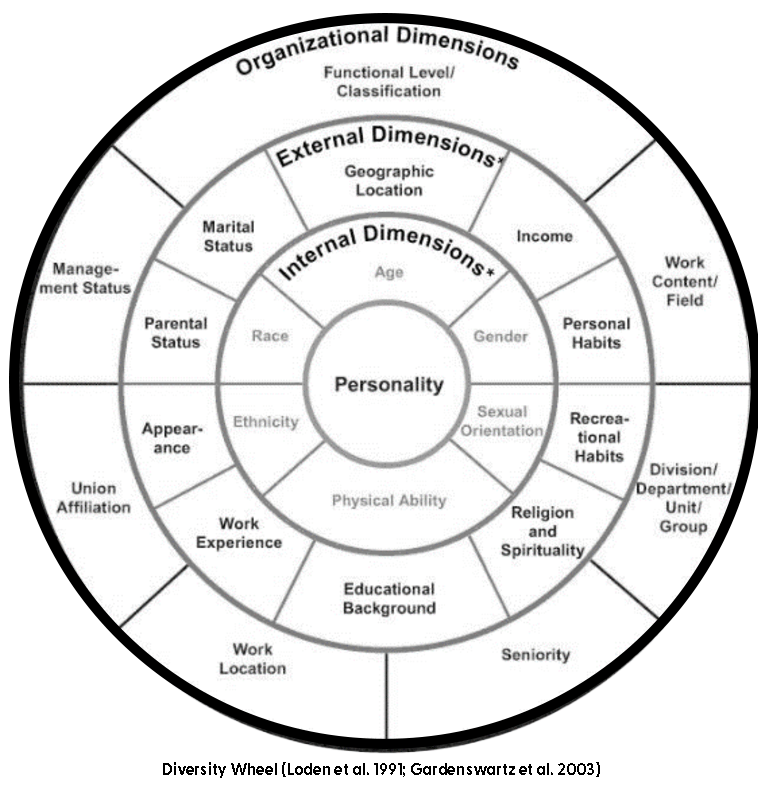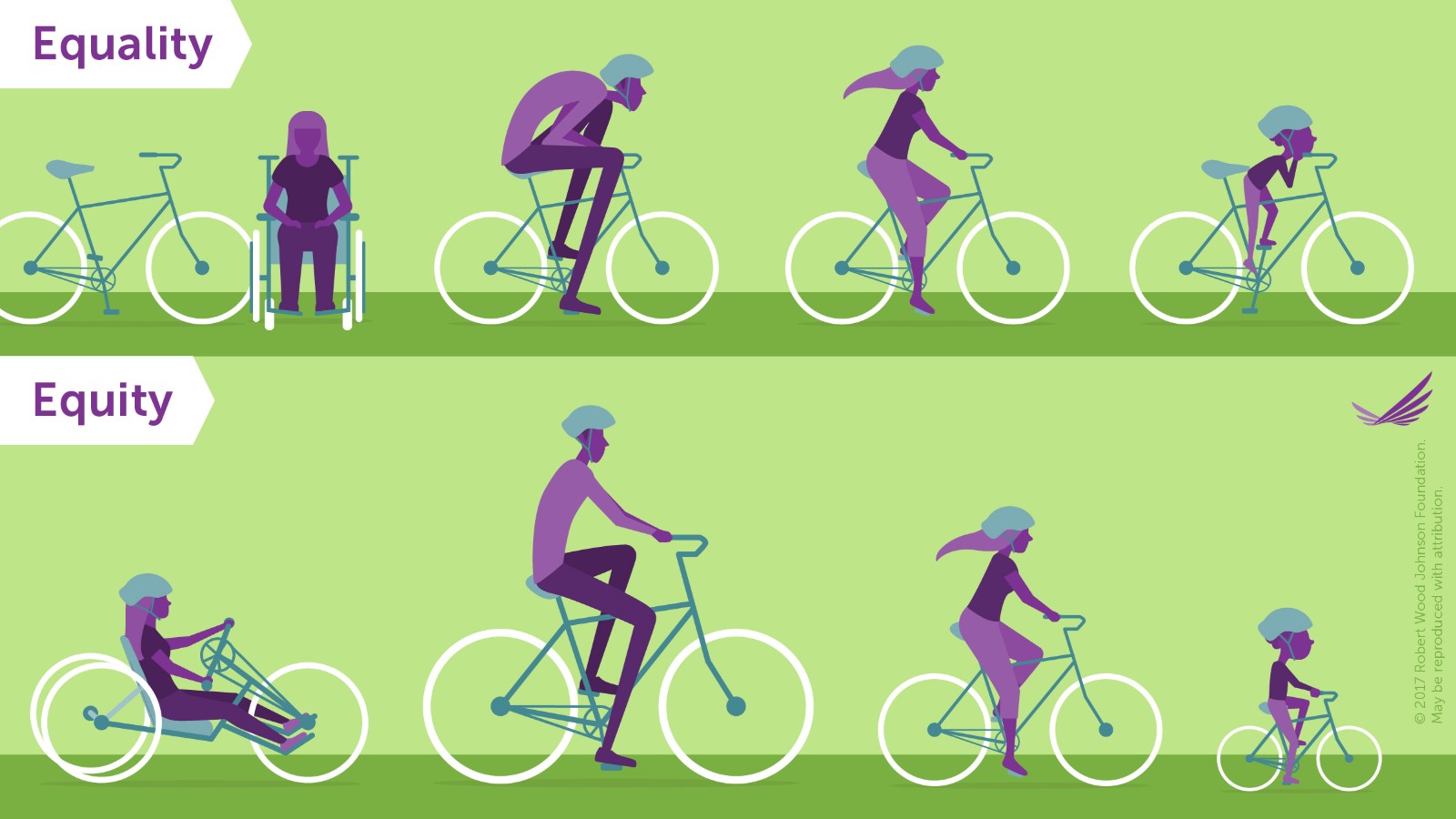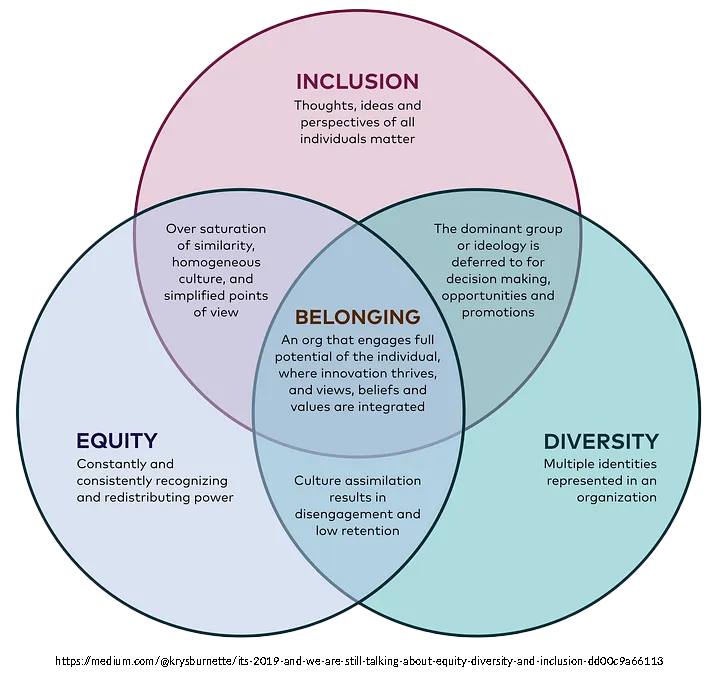Diversity, Equity & Inclusion Definitions
Paolo Gaudiano
Diversity
Diversity within a nonprofit refers to the composition of board members, leadership, staff members, and volunteers. Loden & Associates offers a “dimensions of diversity” model, originally coined the “diversity wheel”, that represents a global view of the primary and secondary dimensions that inform our social identities.” (“Dimensions - loden.com”)
 The dimensions of diversity model, originally coined the Diversity Wheel, features an inner circle with primary aspects of an individual’s identity including physical and mental abilities and characteristics, age, gender, sexual orientation, race/ethnicity, spiritual beliefs, and other innate characteristics at the core of a person’s experiences. An outer circle represents secondary aspects of a person’s identity that are formed and developed by individuals in relation to themselves, family and society, such as political beliefs, education, and work experience. Respecting and engaging people whose identities represent all types of diversity within a nonprofit is a value that benefits all aspects of the organization.
The dimensions of diversity model, originally coined the Diversity Wheel, features an inner circle with primary aspects of an individual’s identity including physical and mental abilities and characteristics, age, gender, sexual orientation, race/ethnicity, spiritual beliefs, and other innate characteristics at the core of a person’s experiences. An outer circle represents secondary aspects of a person’s identity that are formed and developed by individuals in relation to themselves, family and society, such as political beliefs, education, and work experience. Respecting and engaging people whose identities represent all types of diversity within a nonprofit is a value that benefits all aspects of the organization.
The concept of “intersectionality” is essential for understanding how every person has multiple identities and perceives the world with an array of ways of knowing and interpreting life’s experiences. Intersectionality is a term coined in 1989 by legal scholar Kimberlé Crenshaw, professor of law at UCLA School of Law and Columbia Law School, to describe how legal solutions that address discrimination against one protected class can exclude individuals whose identities place them in more than one class. When an individual interacts with the world, others respond to them and their identities at multiple levels: individual, group, organizational, institutional/system, and cultural.
Issues of diversity, equity, and inclusion can arise at any level. The concept of “intersectionality” as Crenshaw developed it refers to what happens when one’s multiple identities contribute to discrimination within an organization or at the institutional/system level. In the nonprofit context, it is important to acknowledge that all people are made up of multiple identities that inherently are part of the whole person.
It is impossible to have healthy and meaningful interactions with anyone without acknowledging the full person based on identities the individual chooses to express. Organizations that acknowledge, respect, and embrace individuals of all identities are more likely to create environments in which all people can thrive and do their best work, ultimately contributing to achieving greater impact in the world.
Equity
 Equity is the just and fair belonging into a society in which all can participate, prosper, and reach their full potential. (“The Equity Manifesto”) Equity is often referred to broadly as a desired societal condition, and it can be advanced by focusing on specific issue areas or aspects of diversity.
Equity is the just and fair belonging into a society in which all can participate, prosper, and reach their full potential. (“The Equity Manifesto”) Equity is often referred to broadly as a desired societal condition, and it can be advanced by focusing on specific issue areas or aspects of diversity.
Health equity is perhaps the most widely recognized example of equity as a social condition. The World Health Organization defines equity as “the absence of unfair, avoidable or remediable differences among groups of people, whether those groups are defined socially, economically, geographically, or by other stratifiers (e.g., sex, gender, ethnicity, disability, or sexual orientation). "Health equity is achieved when everyone can attain their full potential for health and well-being.”
However, it is equally important to think of equity as a way to treat people which creates the condition of equity in systems and society. Equity as behavior focuses on ensuring that people of diverse identities are given the opportunities and resources needed to thrive. When considering racial equity, for example, are people of diverse racial/ethnic identities intentionally recruited, treated equally throughout the application and interview processes, hired at equitable compensation rates, retained and promoted at comparable rates to their peers?
Inclusion & Belonging
 Inclusion is defined as “the active, intentional and ongoing engagement with diversity in ways that increase awareness, content knowledge, cognitive sophistication and empathic understanding of the complex ways individuals interact within systems and institutions. The act of creating involvement, environments and empowerment in which any individual or group can be and feel welcomed, respected, supported, and valued to fully participate.” Association of American Colleges and Universities, AAC&U).
Inclusion is defined as “the active, intentional and ongoing engagement with diversity in ways that increase awareness, content knowledge, cognitive sophistication and empathic understanding of the complex ways individuals interact within systems and institutions. The act of creating involvement, environments and empowerment in which any individual or group can be and feel welcomed, respected, supported, and valued to fully participate.” Association of American Colleges and Universities, AAC&U).
As an outcome of the act of inclusion and equity, belonging is feeling that your authentic self is welcomed and celebrated. Belonging is full membership. Belongingness entails an unwavering commitment to not simply tolerate and respect differences but to ensure that all people are welcome and feel that they belong in the society. This is the “circle of human concern.” (John A. Powell and Stephen Menendian, “The Problem of Othering: Towards Inclusiveness and Belonging”)
Inclusion and belonging in the nonprofit sector can refer to internal and external aspects of the organization. Internal inclusion within a nonprofit focuses on the qualities of board governance, leadership and management structures, and staff member and/or volunteer composition and participation in decision-making. External ways of assessing inclusion refer to a nonprofit’s impact in the world through strategy, programs and services, events, and operations designed to achieve community or worldwide outcomes. To the extent that a nonprofit organization is inclusive and fosters a sense of belonging among its people and the people/communities it aims to enhance, the organization is more likely to benefit from diversity and advance toward achieving equity.